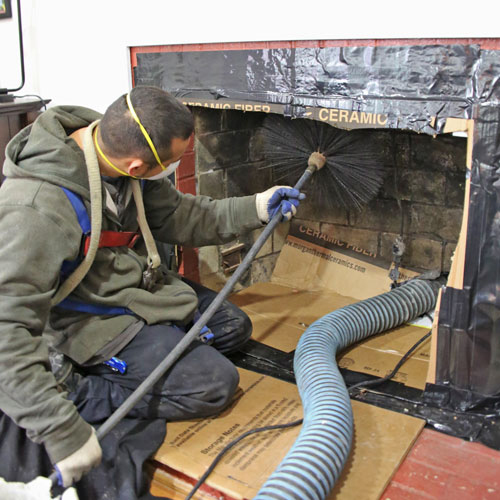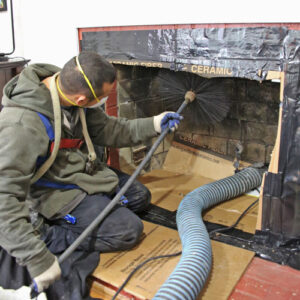Roofing installation is difficult and dangerous work. Find a professional who is experienced and has a solid reputation for quality work. Contact Pikesville Roofing for professional help.
A thorough roofing estimate will include the start and finish dates of the project, payment terms, sales tax, any other fees (like for dumpster rental) and the company’s contact information.
The type of roofing material you choose makes a huge difference in how well your home’s structure holds up against weather damage, as well as its aesthetic appeal. Talk to a contractor about the different materials available and learn more about their pros and cons.
Shingles are the primary roofing material and come in many styles and colors to match the style of your home. Some shingles are more durable than others, while some offer better protection against water leaks. A roof’s sheathing, or decking, is the structural support layer beneath shingles. It is commonly made of plywood or oriented strand board (OSB) and is essential to the integrity of the entire roof structure.
Insulation is one of the most important materials for a roof because it helps prevent hot and cold spots in a house. It also improves energy efficiency and may even lower your utility bills. Some roofing contractors specialize in environmentally-friendly additions to a home’s roof, including reflective shingles and solar panels.
Roof ventilation is another important component to consider. An improperly functioning attic venting system can lead to ice dams and serious roof damage. A balanced ventilation system with ridge vents, soffit vents and attic fans promotes airflow and prevents moisture buildup in the attic space.
During a roofing project, roofers often use a variety of tools. These include a nail gun, high-quality roofing nails and a roofing knife for cutting shingle bundles to size. A hard hat is also a must for roofers. It protects them from falling debris and from head injuries, especially when they’re working on steep-pitched roofs. They also need a work vehicle that can carry the tools and equipment to the job site. If the roof is very steep, they may need roof brackets or toe boards for footing. These are 2-by-4-inch boards screwed into the roof to give the roofer some extra stability. These are often used in place of a ladder on roofs that have a very steep pitch. They are also useful for helping roofers safely load shingles on the highest part of the roof.
Permits
If you are a homeowner, it is important to know whether your roofing project requires a permit. Not only is this essential for protecting your investment, but it also helps ensure that your contractor’s work meets local building code standards. The best way to determine whether or not your roof replacement needs a permit is to speak with your local city building inspector. This individual will be able to tell you what types of work require a permit and whether or not the work you are planning is structural in nature.
While different states have varying requirements when it comes to roofing permits, the general rule is that a permit is required whenever the work is structural in nature. This means that minor repairs and maintenance, such as replacing a few tiles or cleaning gutters, typically do not require a permit. However, large-scale projects like a complete roof replacement usually do require a permit. This is because these larger projects involve a significant amount of work and can cause major structural changes to a home.
In many cities, the process of obtaining a permit for reroofing is relatively simple. A licensed roofing contractor can apply for the permit on behalf of a homeowner and submit plans detailing the scope of work involved. The permit will then be inspected by the city to make sure that the construction work meets city standards. If the work does not meet building code standards, the roofing contractor will have to rework it or face fines from the city.
When it comes to re-roofing a home with asphalt shingles, most cities offer an express permit option that allows homeowners to obtain their permits without having to wait long for an inspection. This type of permit can save homeowners time and money in addition to ensuring that their roofing work is performed legally.
While it may seem daunting to determine whether or not your roofing installation will need a permit, contacting a professional roofing service can help ensure that you’re on the right track. These companies are familiar with local building codes and permit requirements and can help you avoid any headaches down the road.
Preparation
Roofing installation involves lots of hammering and nailing, which can cause vibrations throughout your house. These vibrations can knock things off of walls, such as framed pictures or mirrors. It’s best to remove these items before the work begins. You should also take down any other wall hangings or decorations. These decorations should be moved to a different area of the house during the roofing project, so that they are not damaged by vibrations.
The roofers will need easy access to your rooftop and the space around it to move materials. You should clear the path to your rooftop before the roofers arrive and make sure any gates are unlocked. Providing this easy access will make the job go much more smoothly.
Before the roofers begin work, you should look around your yard and patio to make sure there is a 15-foot clearance all the way around your home. This clearance will prevent the workers from tripping over children’s toys, lawn ornaments, grills, and other outdoor equipment. You should also move any furniture or decorative items that are near the outside of your home, so that they don’t get damaged by falling debris or shingles.
You should also prepare your family members and pets for the noise, mess, and other disruptions that will occur during the reroofing process. The presence of strangers and the loud hammering can be stressful or even dangerous for animals, especially young ones. Keeping your pets and children away from the work areas will minimize their anxiety and help them stay safe.
If your pet is particularly sensitive to these changes, it may be best for them to stay with friends or family during the roofing project. You should also discuss with your kids what the re-roofing process will involve and explain it to them in simple terms. This will make them feel prepared for the changes and understand why they need to be careful. If they have any questions, you should be available to answer them. This will help ease their fears and make them more comfortable during the re-roofing process.
Installation
Roofing installation starts with the roofers inspecting your current roof to make sure it is structurally sound and capable of supporting the new roof. If they decide it is not, they will discuss options with you and explain the cost and benefits of each option.
The roofers will then get everything ready for rooing. They’ll set up tarps, cover your pool and anything else that needs protection, and put down wooden boards to keep debris from damaging your landscaping. The roofers will also set up ladders and a hydraulic dumpster to haul off old shingles and debris.
The first row of underlayment will be installed, using a pattern that involves overlapping and nailing. The nails will be close together at the edges and spread out more toward the center. This prevents water from penetrating the underlayment and leaking into your home. After the underlayment is in place, the shingle rows will be installed. Ventilation will be added if necessary (sewer vents, ridge vents, gable vents, and curve vents). Hip and ridge shingles are placed on the top of your roof for a clean look and additional weather protection.



